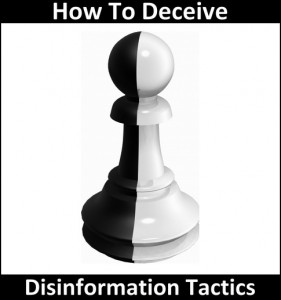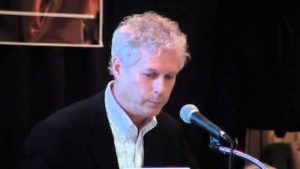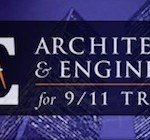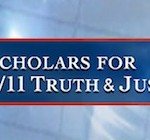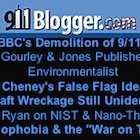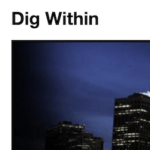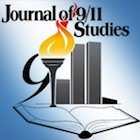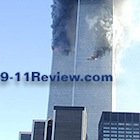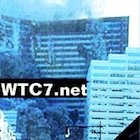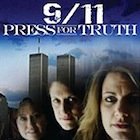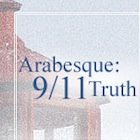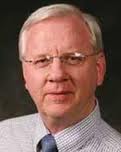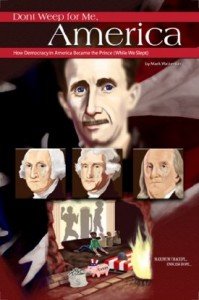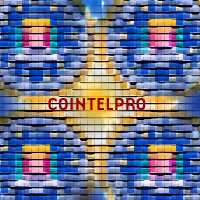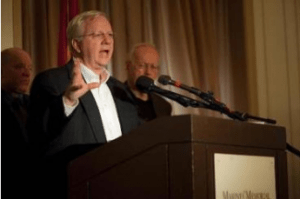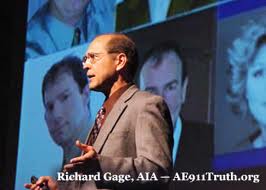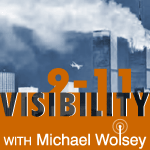FOR IMMEDIATE RELEASE
Contact: Victoria Ashley, STJ911 committee member
Phone: 510-769-5109
Site: www.STJ911.org
Email: stj911@gmail.com
Study: Scientists Discover Active Thermitic Material in WTC Dust
Berkeley, CA, April 3, 2009 — A new study by independent scientists and researchers suggests the cause behind the catastrophic destruction of World Trade Center Towers on September 11th can be seen in the dust itself: active thermitic material, a highly engineered explosive.
The study, published today in The Open Chemical Physics Journal, describes a finding of “red/gray bi-layered chips” in samples of dust taken from vicinity of the World Trade Center following its destruction. Using tools such as a scanning electron microscope (SEM) and x-ray energy dispersive spectroscopy (XEDS) to analyze the material, the study authors concluded that, “the red portion of these chips is found to be an unreacted thermitic material and highly energetic.”
The study’s finding lends new support to the demolition theory put forth by critics of the official reports.
At a time when the American public is finding it difficult to understand the full story behind the current economic crisis, findings of a demolition raise new questions about how the ‘War on Terror’ — an enormous source of recent American spending — was started.
Officials with the National Institute of Standards and Technology (NIST), charged with establishing the cause of the buildings’ destruction, have stated that they “did not test for the residue of these compounds in the steel,” and that thermite, “or another incendiary compound,” would be too difficult to have placed in the buildings without notice.
NIST has stated that such difficulties make demolition unlikely. They concluded that aircraft impacts and the subsequent fires led to the building failures.
Dr. Steven Jones, physicist and author on the paper, says that NIST has refused to test the dust for thermite, super-thermite, or any other accelerant or explosive.
“We’ve repeatedly asked them to follow standard investigative procedure, to perform these tests and release the results. They haven’t.”
Jones says such tests may be required by fire protection codes.
Kevin Ryan, chemist and co-author on the paper, explained why he thinks NIST is wrong. “What we’ve discovered is not conventional thermite — which is what NIST continues to refer to — but a highly engineered thermitic material, or ‘super thermite’, probably designed for just this type of application.”
Pre-planned demolition, supporters say, is the ‘best-fit’ model for the many unusual and unexplained characteristics of the building failures, such as the speed and symmetry of the collapses, and the extreme pulverization of the materials leading to clouds of micron-sized dust particles, described in one insurance report as behaving similar to a “volcanic eruption”.
“One of the unusual features that piqued my interest,” Jones said, “was the pools of molten metal seen in all three rubble piles, WTC 1, 2 & 7.”
NIST officials have published a response stating that the condition of the steel was “irrelevant to the investigation of the collapse.”
Jones, formerly a Professor of Physics with Brigham Young University and known for his work in muon-catalyzed fusion, published in Nature, Scientific American, and the Journal of Physical Chemistry, began researching the 9/11/01 attacks in 2005.
Jones discovered the curious thermitic material in 2007, when he ran a magnet over a dust sample given to him by a Manhattan resident survivor of the attack, and found that some particles were attracted to the magnet.
“That was very odd to me,” he said.
Those particles turned out to be iron-rich microspheres, partially described in a 2001 USGS study of the dust.
But to fully analyze, describe and report on the thermitic material would take longer.
Jones was joined in that effort by several others including Dr. Niels Harrit, a chemistry professor with the University of Copenhagen for over 30 years and author of numerous research papers in journals such as Nano Letters, the Journal of the American Chemistry Society, and the Journal of Physical Chemistry A.
Harrit says that he is frequently asked why he researches the September 11th attack. and says has two answers.
“First, I am opposed to crime, and second, when my 6 grandchildren ask me, ‘Grandfather, which side were you on?’ I will be able to answer them, ‘I was on your side’.”
Co-author Dr. Jeffrey Farrer, a materials scientist and Director of the TEM (Transmition Electron Microscopy) laboratory at BYU, says he hopes the paper will “change the way the 9/11 truth movement is viewed by the mainstream public and media.”
And chemist and co-author Kevin Ryan, a former Underwriters Laboratories manager, challenged the NIST report in public statements in 2004, and was consequently fired.
“This finding really goes beyond anything that has previously been shown,” says Jones. “We had to use sophisticated tools to analyze the dust because this isn’t just a typical explosive, RDX or CD4 or something — this is a highly engineered material not readily available to just anyone.”
In a 2006 interview with Deseret News, Jones noted that commercial explosives must contain tag elements for traceability, but that no law requires tagging of advanced forms of thermitics.
In 2008, several of these authors published three articles challenging the official reports in US scientific journals, The Open Civil Engineering Journal, The Environmentalist, and The Journal of Engineering Mechanics Dozens of other papers making similar challenges have been published in the sister publication of the Scholars group, The Journal of 9/11 Studies
Scholars for 9/11 Truth and Justice is a non-partisan organization of over 700 independent researchers analyzing the September 11, 2001 attacks with a strong emphasis on the scientific method.
For information: http://www.stj911.com or
Contact: stj911@gmail.com
Phone: 510-769-5109
# # #

